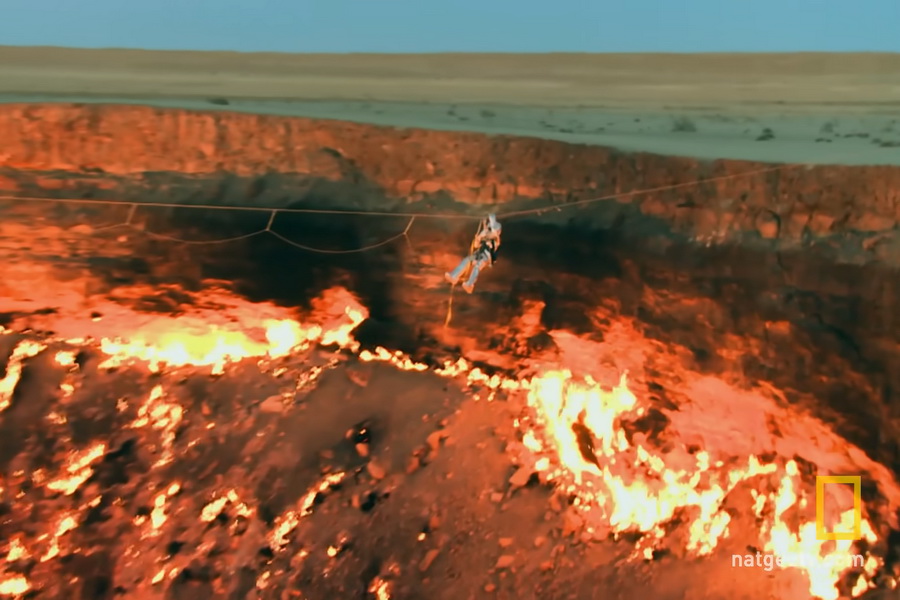Interesting Facts about the Darvaza Crater

A still from the video of natgeotv.com
The Darvaza gas crater is a captivating phenomenon that emerged due to a geological error in 1971. There are several locations around the globe that embody the interplay of natural forces and human impact. While other fiery wonders exist, many of which are quite ancient, the uniqueness of this Turkmenistan attraction, known as the Door to Hell, is noteworthy. Let's delve into these questions and uncover some fascinating facts about the Darvaza crater.
A Man Returned from Hell
In 2013, Canadian traveler and explorer George Koronis descended into the depths of the Darvaza crater. Preparation for this venture took nearly two years, as a single misstep could leave him trapped in flames. To avoid panic upon entering the crater, he hired a stuntman who ignited him and taught him how to react in such situations. Ultimately, George Koronis spent 17 minutes in the fiery pit, collecting gas and soil samples, and discovering unique bacteria that can survive at high temperatures. He later confessed that the experience was far scarier than he had imagined.
Can the Darvaza Be Extinguished?
In 2010 and again in 2022, the President of Turkmenistan, Gurbanguly Berdimuhamedow, called for a solution to extinguish the crater. Scientists from various countries participated in the efforts, proposing different methods such as covering the crater with a giant lid, extinguishing the flames with quick-drying cement, or drilling a nearby well. However, no one could guarantee safety, or the absence of risks related to explosions or other catastrophic consequences. Consequently, the crater continues to blaze, attracting thousands of tourists, and no one knows when the gas reserves in Darvaza will run out.
Fiery Counterparts to Darvaza
What makes Darvaza unique is its deep crater formation. However, burning sources can be found in other countries, all notably located in Asia.
- Baba Gurgur. A large oil field in Iraq, believed to have hosted the Eternal Flame for over 4,000 years. References to this natural wonder can be found in the works of Plutarch and Herodotus.
- Yanar Dag. A limestone hill in Azerbaijan, where ancient eternal flames burn from natural gas. The flames can reach a height of one meter, spanning about 10 meters wide. Marco Polo wrote about this fire in his "Book of Wonders."
- Yanartash. A mountain in Turkey where natural gas has been burning for thousands of years. This site is also known as Chimera; some researchers of ancient Greek myths suggest it is linked to the myth of the fire-breathing creature, Chimera.
